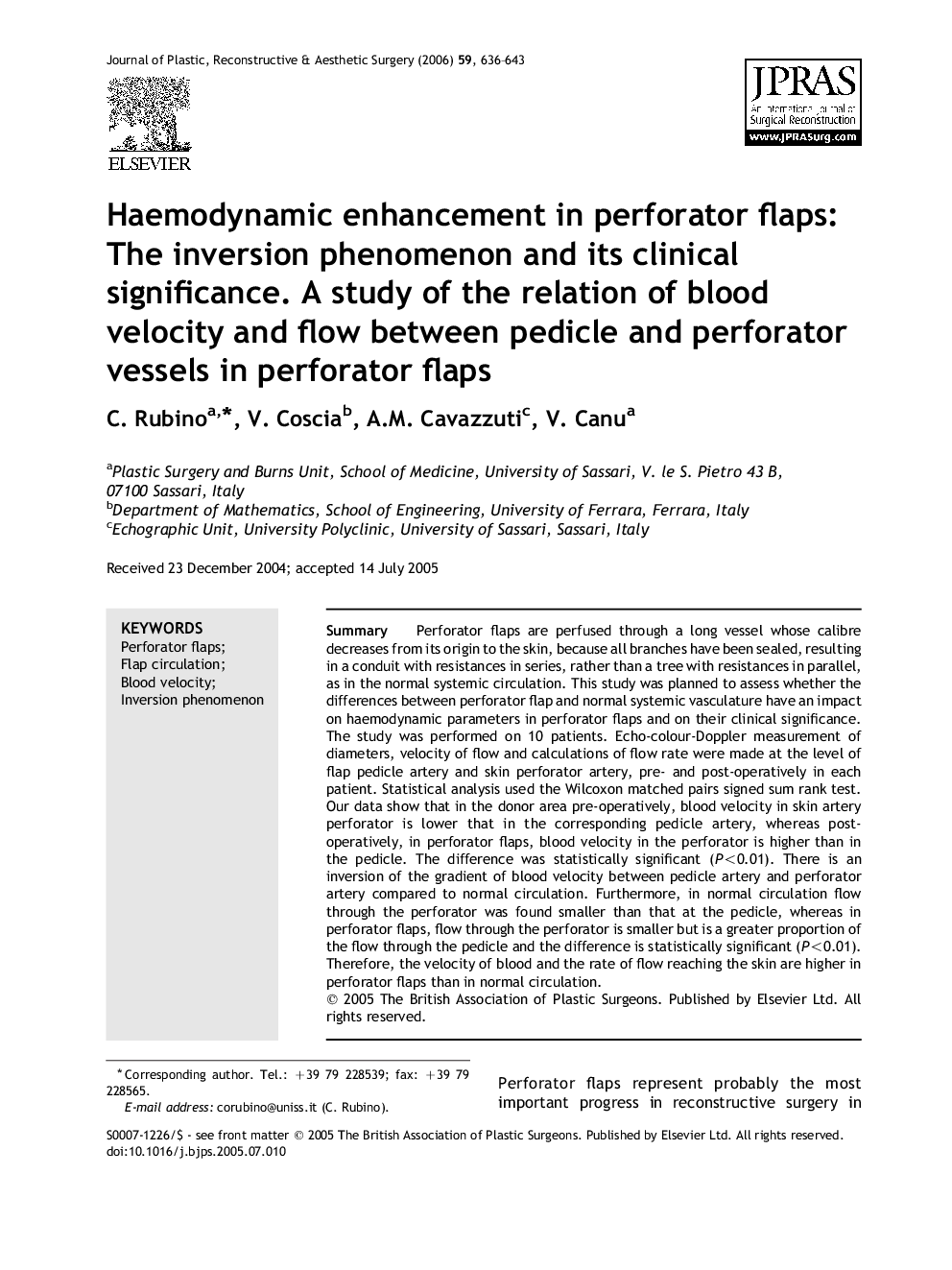| Article ID | Journal | Published Year | Pages | File Type |
|---|---|---|---|---|
| 4121264 | Journal of Plastic, Reconstructive & Aesthetic Surgery | 2006 | 8 Pages |
SummaryPerforator flaps are perfused through a long vessel whose calibre decreases from its origin to the skin, because all branches have been sealed, resulting in a conduit with resistances in series, rather than a tree with resistances in parallel, as in the normal systemic circulation. This study was planned to assess whether the differences between perforator flap and normal systemic vasculature have an impact on haemodynamic parameters in perforator flaps and on their clinical significance. The study was performed on 10 patients. Echo-colour-Doppler measurement of diameters, velocity of flow and calculations of flow rate were made at the level of flap pedicle artery and skin perforator artery, pre- and post-operatively in each patient. Statistical analysis used the Wilcoxon matched pairs signed sum rank test. Our data show that in the donor area pre-operatively, blood velocity in skin artery perforator is lower that in the corresponding pedicle artery, whereas post-operatively, in perforator flaps, blood velocity in the perforator is higher than in the pedicle. The difference was statistically significant (P<0.01). There is an inversion of the gradient of blood velocity between pedicle artery and perforator artery compared to normal circulation. Furthermore, in normal circulation flow through the perforator was found smaller than that at the pedicle, whereas in perforator flaps, flow through the perforator is smaller but is a greater proportion of the flow through the pedicle and the difference is statistically significant (P<0.01). Therefore, the velocity of blood and the rate of flow reaching the skin are higher in perforator flaps than in normal circulation.
